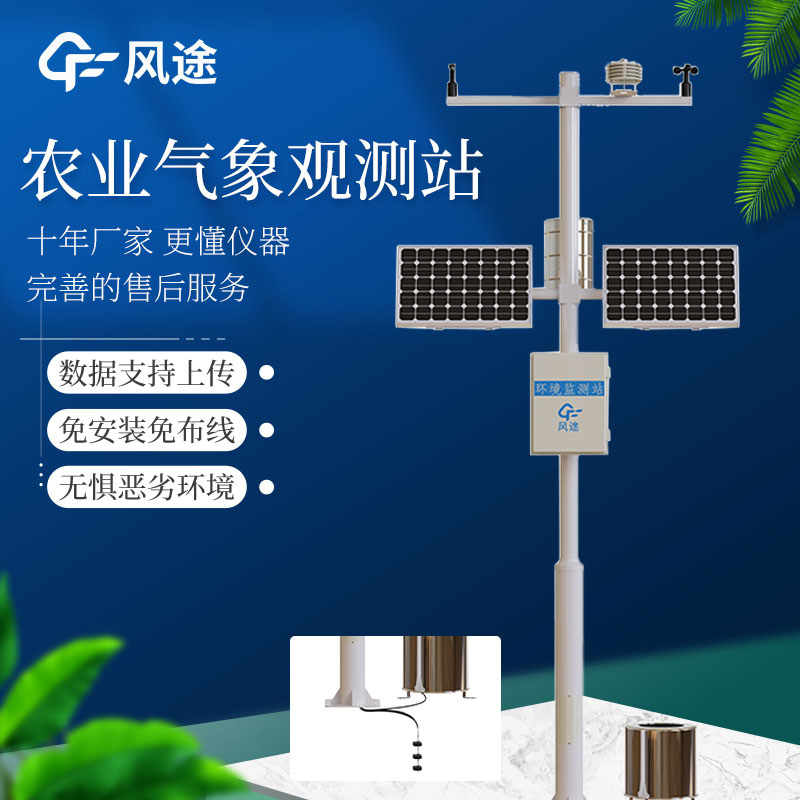Shandong Fengtu IOT Technology Co., Ltd
Sales Manager:Ms. Emily Wang
Cel,Whatsapp,Wechat:+86 15898932201
Email:info@fengtutec.com
Add:No. 155 Optoelectronic Industry Accelerator, Gaoxin District, Weifang, Shandong, China

Sales Manager:Ms. Emily Wang
Cel,Whatsapp,Wechat:+86 15898932201
Email:info@fengtutec.com
Add:No. 155 Optoelectronic Industry Accelerator, Gaoxin District, Weifang, Shandong, China
time:2024-12-20 09:26:06 source:Weather Station viewed:282 time
The pecan industry in Lin'an has encountered numerous troubles in the face of meteorological disasters, and the "violent plum rain" in 2024 was a severe test. The prolonged overcast and rainy weather inhibited the photosynthesis of pecan trees, hindered their flowering, pollination and fruiting. Insufficient sunlight affected their growth and fruit formation. Although the weather in the later period also had an impact on the fruit quality, the negative effects during the plum rain season could not be ignored.
Under such circumstances, the introduction of Agricultural Weather Stations may become a "lifesaver" for the pecan industry in Lin'an. The weather stations conduct precise monitoring of key meteorological elements and provide scientific guidance for cultivation.
In terms of temperature, since pecans are suitable for growing in an environment with a temperature ranging from 15 to 25 degrees Celsius, the weather stations monitor it in real time and immediately alert growers when the temperature is abnormal so that they can take measures to adjust the temperature. The monitoring of light intensity can accurately control its intensity and duration, helping with shading for seedling cultivation and reminding growers to pay attention to the impact on photosynthesis during the plum rain season when the light conditions are poor. Precipitation monitoring is of vital importance. Pecan trees are intolerant of waterlogging. The weather stations accurately record precipitation, notify growers to drain water when there is heavy rainfall, and remind them to irrigate in a timely manner during droughts to maintain appropriate soil moisture.
They can predict key information about the plum rain season in advance. With this information, growers can improve the drainage system and prepare sufficient flood prevention materials in advance, effectively reducing the risk of flooding. During the plum rain season, the weather stations continuously provide real-time weather changes. Based on this, growers can flexibly adjust their protective measures, such as increasing the frequency of drainage and taking precautions against secondary disasters to reduce losses.
The weather stations predict the risks of pests and diseases based on data such as humidity and temperature. During periods with high humidity and suitable temperature like the plum rain season, they promptly issue warnings to growers, reminding them to strengthen pest and disease prevention and control. By taking measures such as spraying pesticides in advance and cleaning diseased branches, the spread of pests and diseases can be controlled, ensuring the yield and quality of pecans.

In outdoor activity and work scenarios, the dynamic changes of the meteorological environment are directly related to personnel safety and task progress efficiency. Whether it is outdoor exploration, geological prospecting, agricultural field management, or emergency rescue, the outdoor weather is o...
Poor ventilation and dense traffic flow in the tunnel can easily lead to the accumulation of harmful gases, posing a threat to safety. The Tunnel visibility detector by Fengtu uses the transmission principle to accurately monitor visibility and CO concentration, safeguarding tunnel safety.Product In...
In the field of transportation, it is necessary to monitor visibility in real time. Although there are already fixed visibility monitoring stations, the emergence of the Portable visibility Sensor is by no means accidental, but is based on a variety of practical needs.Because emergencies happen from...
Hydrological and environmental monitoring station is an automated monitoring device integrating Beidou-2 and Beidou-3 regional short message communication technologies. This device continuously monitors key hydrological parameters such as water level, flow velocity, flow rate, and rainfall, enabling hydrological data acquisition and disaster warning functions, and ensuring reliable real-time data transmission even in extreme environments....